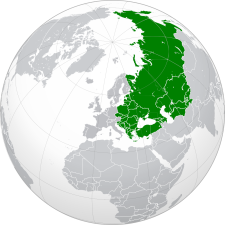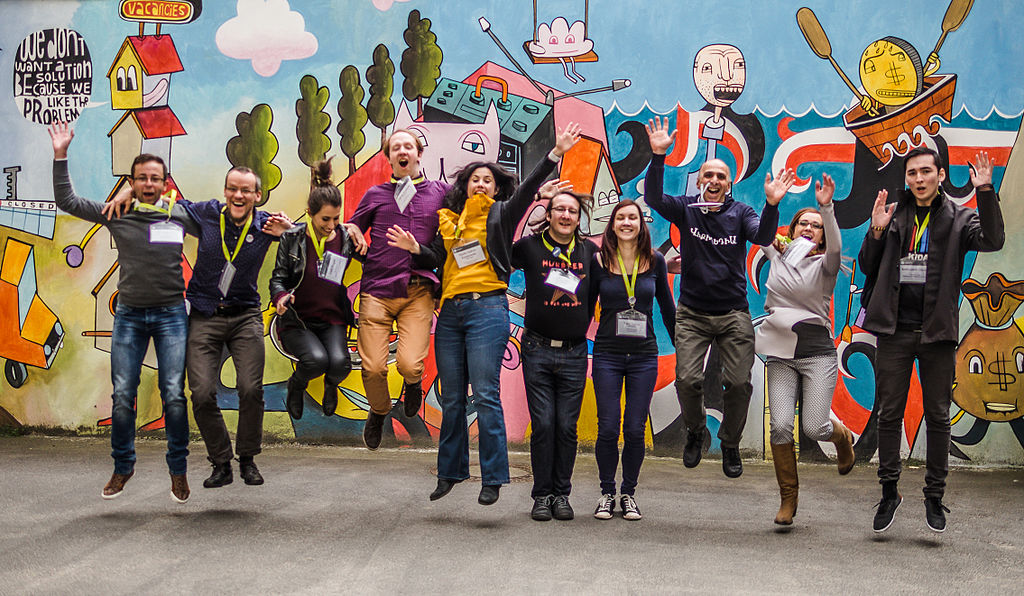Did you know that the Central and Eastern Europe and Central Asia (CEECA) region is piloting one of the first regional hubs in the Wikimedia movement?
The Central and Eastern Europe and Central Asia (CEECA) region is home to 35 different Wikimedia affiliates, as well as several user groups with a language or thematic focus. The region includes some of the longest serving chapters in the entire movement; even the youngest chapter in the region, Wikimedia Armenia, is nine years old, and proof that the region has a very long history of organized and structured Wikimedia activities. This historical lens may explain the fact that, while not being among the most populated regions, CEECA makes up 21% of all chapters in the movement, and is second only to the region of North Western Europe in terms of number of chapters. This is a region of many different communities, spanning countries as geographically vast as Russia and as small as Montenegro, from the Alps to Sakhalin. Together, the communities, languages, countries and priorities create a part of the Wikimedia movement that is accustomed to collaboration.
As part of the Wikimedia Foundation’s shift to a more regional approach to our work with this year’s annual plan, in this blog we will dive into the activities and trends happening in the CEECA region, including the latest with the CEE regional hub. This regional focus will allow the Foundation to better understand localized needs and regional trends as part of its work.
Editing trends in CEECA

The CEECA region makes up 7% of the global population and 9% of global internet users. The region has a proportionate amount of Wikimedia editors: it is home to 14% of total unique editors around the world. In terms of readers to the Wikimedia projects, only 4% of global total annual page views come from the region. That means there is still considerable room for growth.
Regional grantmaking
Over the past year, the amount of grants the CEE region received increased along with the number of movement organizations that received a grant. In the 2021-2022 fiscal year, grantees in Central and Eastern Europe received a total of $1.3 million USD in support through different community resources grants, shared across 19 countries. Compared to the previous year we see an increase both in terms of funding (89%) and in the number of countries to which this funding was directed (4 new countries). Overall there are 14 new grantees, 10 of which entered through rapid funds, and 2 through the Research Fund.
Movement Strategy Implementation Grants also play an important role in the region. These grants have funded both communities and affiliates in implementing movement strategy priorities. These programs include a project to support the development of Kyrgyz Wikipedia, a Wikimedia Austria and Wikimedia Poland led project to test a global thematic hub around Volunteer Support, and a project for underrepresented communities in the Aromanian and Balkan Romani Wikipedias. Beyond these, the largest project supported by movement strategy grants has been the building of the CEE Hub – more on that below!
Despite this growth and progress, there is still room to improve outreach. This is especially true in the General Support Fund, a fund that provides flexible, longtime grants for affiliates with larger programs and plans, which only supported one new country in CEECA this past year. It is also worth noting that the average size of grants given through the General Support Fund globally, $117,000, is nearly twice the size of average grants to CEE, MEA, and South Asia – even when adjusting for country costs. Some of the barriers for growth in the grants area may be connected with capacity – grants bring a lot of additional administrative work, which can be difficult to handle by the smaller communities already doing a lot of programmatic work, especially when this work is led by volunteers.
In 2021 the CEE Needs research was conducted to better understand the needs of the region and help to design the regional hub. This series of interviews and a survey also generated insights about grantmaking. Overall, Foundation grant programs were seen as highly valuable in the region. According to the research, people felt that the grant programs were relatively easily accessible, and liked that the programs are tailored to specific Wikimedia activities. Affiliates in CEE also acknowledge the stability and predictability that those forms of funding bring, which was especially needed during the times of COVID-pandemic when other forms of support, such as those from cultural and educational institutions, were uncertain or unavailable.
Piloting a hub
The idea of the regional hubs was born out of Movement Strategy discussions and a desire to bring decision-making closer to the regions and to create networks of support and collaboration, uniting many communities..
The design process for the CEE hub started in 2020, when the pandemic brought the regional discussions and collaborations that were already happening in person to online forums. From the start, the idea was to work in a collaborative and inclusive form, and give the communities a clear sense of co-ownership. A group of representatives of 10 communities worked together at open-to-all meetings to create an equitable and community-driven governance structure and plan for the next steps.
Thanks to this collaborative effort, the CEE hub is now an operational and formalized entity, with a grant application for the year 2022/2023, a professional coordinator and an established Steering Committee.
The hub aims to guarantee fair access to knowledge and resources for everyone in the region by connecting the CEE communities and providing the needed services. It is, by principle, owned by the communities and offers equal access for everyone. Its program, based on research conducted in 21 regional communities, is built around 3 pillars:
- Administrative – simplify and pool bureaucratic processes and support communities in writing applications for funds (both through Foundation and other grant programs)
- Programmatic – developing initiatives for capacity development of volunteers, affiliates and communities in general and facilitating the adoption of technical innovations and features
- Communication – build and maintain connections and support knowledge exchange in the region
All the activities are to be done in a truly CEE cooperative manner, working not only with the regional communities, but also, whenever possible, synergizing with other structures, such as different emerging hubs or Wikimedia Europe.
This important work is ready to launch, with the new Steering Committee elected during the CEE Meeting in Ohrid, and with the CEE Hub coordinator Barbara Klen starting her work on December 1st.
Collaboration, content and campaigns
The hub was built on a strong foundation of collaboration and networking happening in the CEECA since 2011. For example, the annual CEE Meeting has taken place every year since 2015 and is attended by representatives of affiliates and communities of multiple countries of the region.

The collaborative spirit of the region manifests itself the most in the CEE Spring writing campaign. This contest is the Wikimedia movement’s answer to the difficult history of the region, symbolized by historically difficult springs. The aim – very Wikimedian in spirit – is building mutual understanding by sharing and gathering knowledge about each other. It is organized in 30+ language versions of Wikipedia and works on up to 17,000 new or updated Wikipedia articles about the countries and communities of the CEE each year. The topics can vary greatly – from an article about an Estonian church on Greek Wikipedia to an article about a Greek translator on Estonian Wikipedia, and from an article about traditional slovakian lace in Polish Wikipedia, to an article about a historic Polish village in Slovakian Wikipedia. But the special focus of the contest is on closing the content gender gap – in 2022 it brought 1194 articles about women in 24 Wikipedia language versions!
The contest is organized in a truly cooperative spirit. Funding is provided through Wikimedia Austria, which distributes grants to communities in the region. This approach promotes local ownership and leadership, as local organizers design and lead campaigns for their own communities. The CEE Spring writing campaign has for many years become the most central project of the region, and engages volunteers from almost every community in the region in organizing, creating lists of important topics, and writing articles. The relationships and networks built through this campaign formed the backbone of what is now the CEE hub.
Challenges for the region
We must also recognize the challenges currently facing the CEECA region. The Russian invasion of Ukraine is an ongoing crisis that is constantly affecting the safety of Wikimedia volunteers and access to free knowledge. Despite the enormous suffering and danger that have been brought to their country, Ukrainian Wikimedians continue to work on the mission of bringing free, fact-based knowledge to everyone.
In the collaborative spirit of the region and the Movement as a whole, other communities have joined Wikimedia Ukraine and Ukrainian community in creating numerous wiki-related initiatives to respond to the Russian invasion of Ukraine through sharing resources, organizing campaigns and storytelling.
Despite those efforts and acts of support and the ongoing activity of the volunteers, free knowledge in the region is strongly affected by the war. It has had a direct effect on the physical and psychological wellbeing and safety of many volunteers from the region. It has also impacted how accessible knowledge in the region continues to be. The Wikimedia Foundation has been receiving content takedown requests from the Russian authorities. You can read more about those cases in the Wikimedia Foundation statements, with the latest being from November 22.
Looking ahead
The CEECA region is a region with a strong collaborative spirit. So what comes next? In 2023 the entity built by this collaboration, the CEE hub, will begin its programmatic work, and also support regional communities. We’re excited to see what happens next as the first movement hub starts its work!

Can you help us translate this article?
In order for this article to reach as many people as possible we would like your help. Can you translate this article to get the message out?
Start translation
